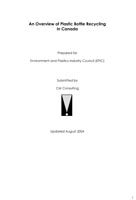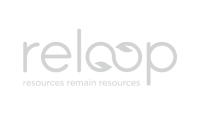
Recovery and recycling of plastic bottles in Canada varies dramatically based on the province and the bottle type.
In 2002, of the 235,086 tonnes generated, approximately 84,709 tonnes or 36% of plastic bottle material was recovered and recycled, based on available data.
To date, deposit return systems for beverage containers are 2.3 times more effective than municipal curbside and voluntary depot programs. (75% deposit return versus 33% non-deposit return).
Non-deposit return recovery rates are significantly lower that those achieved in deposit return jurisdictions because incentives (like deposit refunds) do not exist for recycling. Also, “away-from-home” generation accounts for about 63% of all PET beverage containers. Recycling services in away-from-home locations (parks, beaches, commercial establishments, venues, events etc.) are very limited.
The weakest areas of plastic bottle recovery are from the residential sector for non-beverage bottles, like those used for detergents, cleaners, and food. In general, these bottles are collected through locally organized and financed municipal curbside and voluntary depot programs.
Residential recycling rates are also impacted by low recovery from multiresidential units (apartment buildings), where convenience, awareness and increasing participation are challenges. This is a growing sector.
Dedicated programs for the recovery of HDPE milk jugs operate in several provinces and the recovery rates vary from 38% to 63%.
Stewardship programs for the recovery of plastic motor oil bottles operate in four Canadian provinces and the recovery rates vary from 18% to 45%. Ontario and Quebec will be implementing similar used motor oil bottle stewardship programs soon.
Financing plastic bottle recovery in Canada varies by bottle type and collection system. In several cases, up-front consumer fees are used to generate revenue to off-set program costs. In some provinces, excess generated revenue is also used to subsidize other provincial environmental programs. Ontario’s new Blue Box Program charges brandowners materialbased levies, which are used to finance 50% of the net blue box, program costs.

